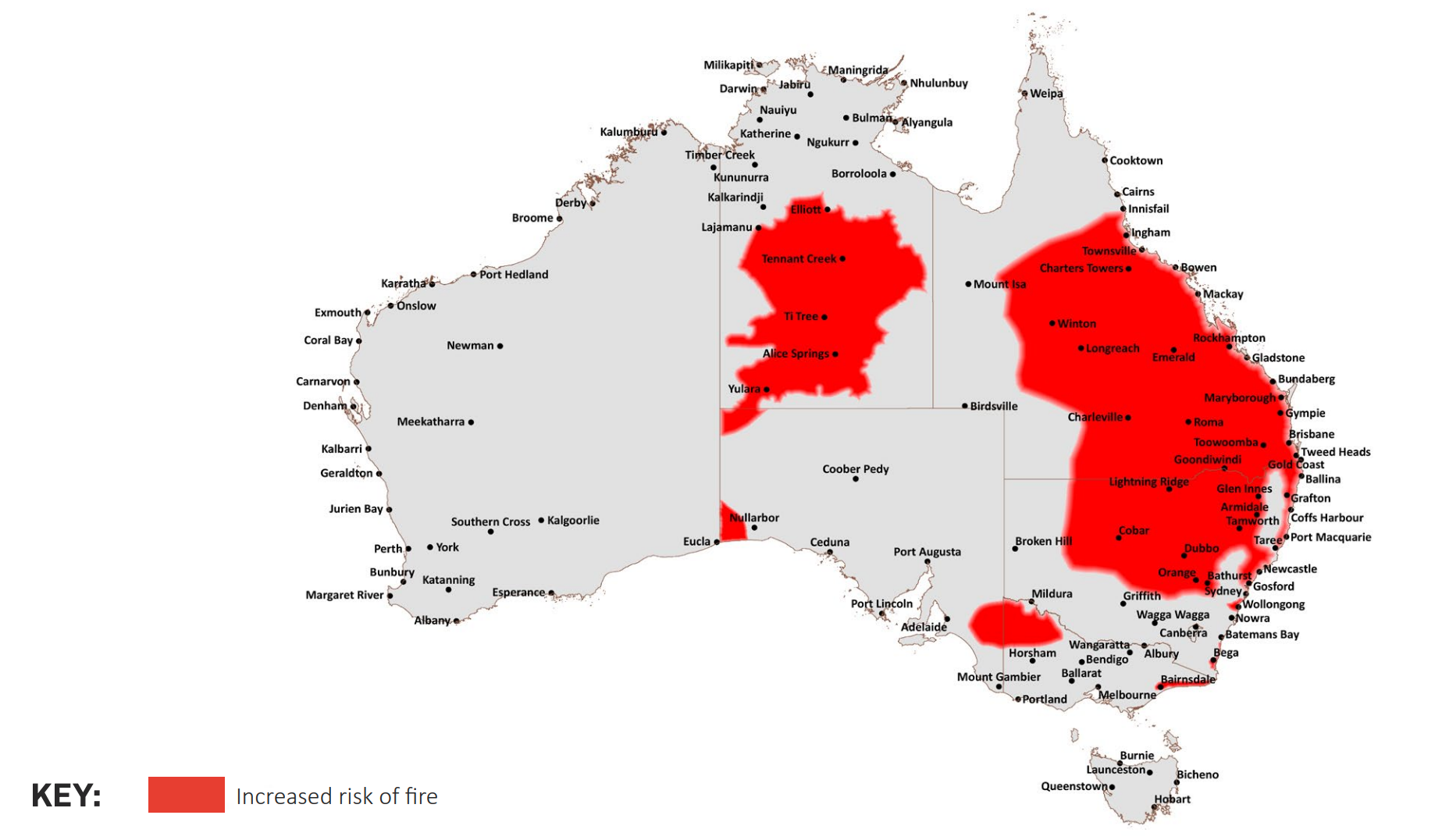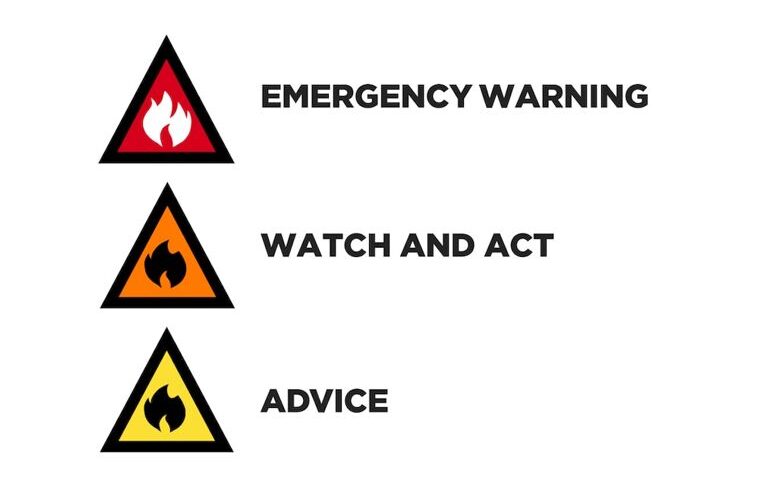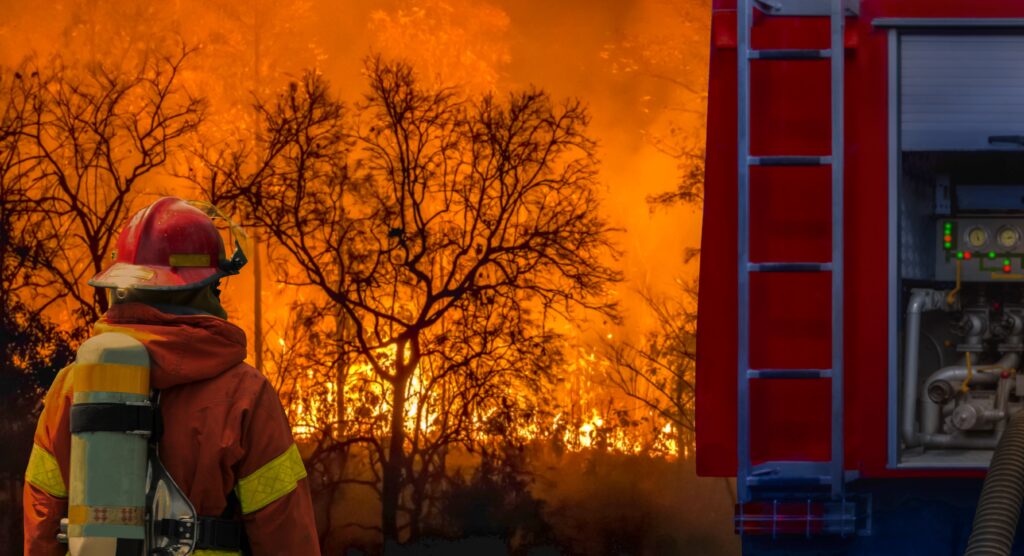As you explore and study in Australia in 2023, it’s crucial to be aware of the heightened bushfire risks this year. With predictions of above-average temperatures and less rainfall, bushfires are more likely to start and spread. Areas with extra vegetation from previous wet seasons also add to the fire risk.
Now, don’t stress too much – it’s pretty unlikely you’ll run into a bushfire, but, it can’t hurt to be prepared. The good news is, Australia has a solid emergency plan for handling bushfires. Plus, many regional universities are increasing their fire safety vigilance this year, so you’re in safe hands.
Read on for information and resources that are helpful to know when it comes to bushfire safety in Australia.
Areas more at risk of bushfires in Australia in 2023
While bushfires can occur anywhere in Australia, pay special attention if you’re in Queensland, New South Wales, Victoria, South Australia, or the Northern Territory, as these regions face an increased risk. Key areas to watch include dense forests in New South Wales and Victoria, the dry southern regions of Western Australia and South Australia, Tasmania’s forested areas, and the Northern Territory’s grasslands in the dry season.
 Image: AFAC’s seasonal bushfire outlook for spring 2023. Areas are based on the interim biogeographic regionalisation for Australia and other geographical features.
Image: AFAC’s seasonal bushfire outlook for spring 2023. Areas are based on the interim biogeographic regionalisation for Australia and other geographical features.
How can I prepare for a bushfire?
- Get to know your area: Are you living in a spot where bushfires are a risk? A quick chat with someone from your uni, a local council office, or even a community centre can give you the lowdown on whether you’re in a bushfire-prone area.
- Make your own bushfire game plan: Think about what you’d do if there’s a bushfire. Where would you go? Who would you call? Jot down a plan with safe spots to head to and make a list of key contacts – like the local fire brigade, emergency services, and a contact at your university.
- Pack a ‘just in case’ bag: Get a bag ready with some water bottles, snacks that won’t go bad (think granola bars), a basic first aid kit, a battery-powered radio (for news updates), and don’t forget your important docs – your passport and student ID.
- Keep up-to-date: Sign up for local bushfire alerts – your phone can be a great tool for this. Also, bookmark some websites like the Bureau of Meteorology and MyFireWatch on your laptop or phone. They’re super handy for the latest on weather and fire situations.
How will I know there’s a bushfire?
There are three main types of bushfire warnings you should know about, as outlined by the National Emergency Management Agency:
- Advice: This is a heads-up that there’s a fire in the area, but it’s not an immediate threat to you.
- Watch and Act: Things are getting more serious. A bushfire might be heading your way, so start getting ready to act on your bushfire plan.
- Emergency Warning: This is the highest alert. A bushfire is very close and poses a serious threat. It’s time to act immediately, following the safety advice from authorities.
 Staying in the know with apps and alerts:
Staying in the know with apps and alerts:
- ‘Fires Near Me‘ app: This is your go-to app for real-time bushfire info. It tells you if there’s a fire close to where you are. Super useful to have on your phone.
- Local radio: Sometimes old school is best. A battery-powered radio is your friend, especially if the power goes out and you can’t charge your phone. It keeps you updated with the latest fire news.
- University alert system: Most education providers will send out SMS or email alerts about local bushfires. Make sure you’re signed up for these. It’s a direct line to knowing what’s happening on or near campus.
What do I do during a bushfire emergency?
Stay calm and informed: Panic can cloud judgment, so stay calm. Keep monitoring updates and follow instructions from local authorities.
Act on your emergency plan: If evacuation is advised, do so immediately using your pre-planned routes. If you’re instructed to stay, find the safest spot in your residence, ideally away from windows.
Dress appropriately: In bushfire situations, wear protective clothing – long sleeves, pants, and a mask to filter smoke.
Communication is key: Inform someone about your whereabouts – a family member, friend, or university contact.
Post-bushfire actions: Follow local guidance on when it’s safe to return. If your living situation is impacted, reach out to your university for assistance and support.
Useful websites
Here’s a list of state & territory-based websites containing information on emergency alerts:
NSW – NSW Rural Fire Service
Victoria – Vic Emergency
Queensland – Queensland Government Disasters and Alerts
South Australia – South Australian Country Fire Service
Western Australia – Emergency WA Warnings & Incidents
Tasmania – TasALERT
Northern Territory – SecureNT
Australian Capital Territory – ACT Emergency Services Agency





